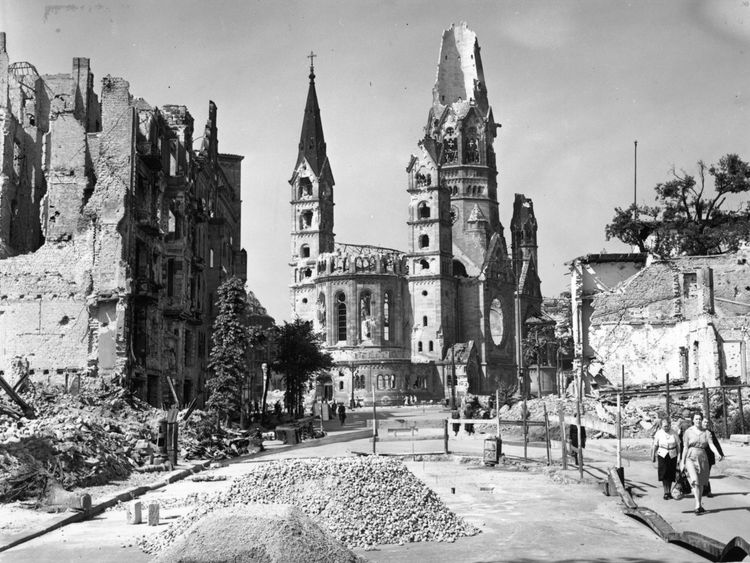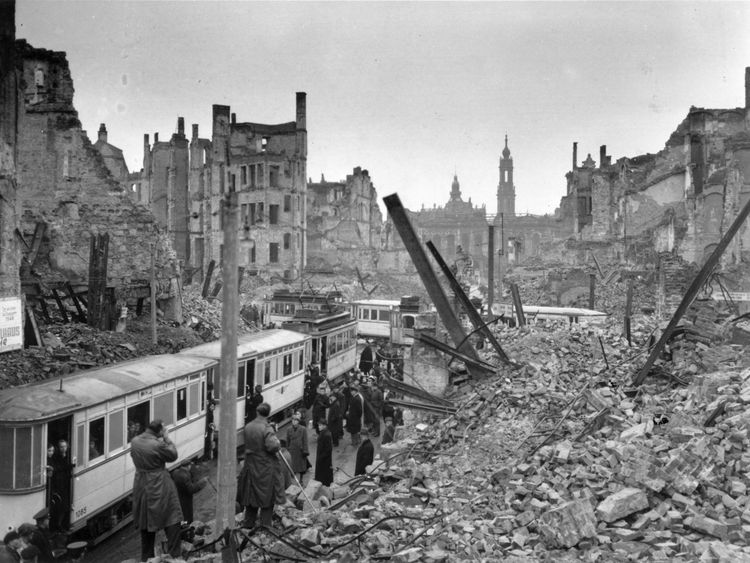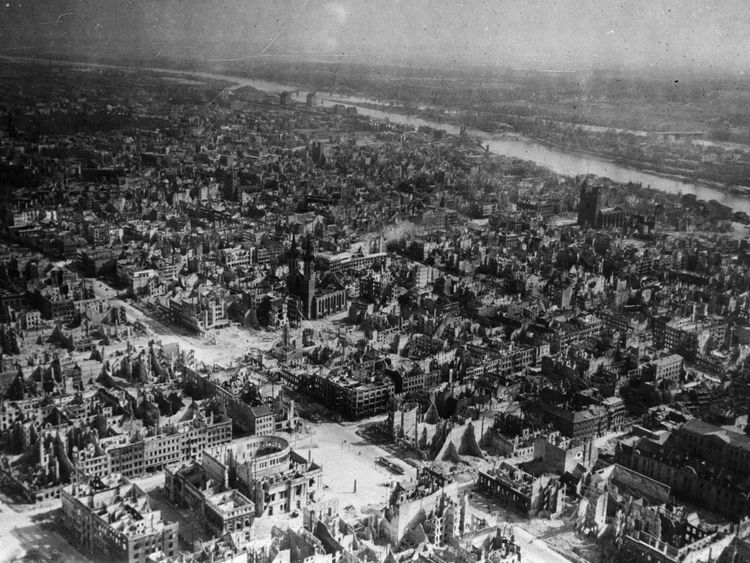Shock waves from bombing raids on Germany during the Second World War were powerful enough to alter the atmosphere at the edge of space, scientists have discovered.
Cities such as Dresden and Hamsburg were reduced to rubble and ash by the devastating explosions, with new research suggesting the blasts disturbed the ionosphere hundreds of miles above Earth.
The bombing raids on Germany by the Allies had begun in 1942 and included the so-called Grand Slam, which weighed 10 tonnes.
The ionosphere, which extends from an altitude of about 50km (31 miles) to 1,000km (620 miles), is electrified by radiation from the sun and space, and its charge was significantly weakened at the height of the bombings.
Researchers from the University of Reading discovered that the atmosphere had been altered during the conflict after comparing detailed records of the raids with data from British wartime scientists.
Between 1943 and 1945, staff at the Radio Research Centre at Ditton Park, near Slough, fired a series of shortwave radio pulses 100km (62 miles) to 300km (186 miles) into the air.
Echoes from the radio signals bouncing off the ionosphere layers revealed information about their height and electrical intensity, but the scientists had no idea the data they were recording bore a chilling hallmark of the war.

Chris Scott, professor of space and atmospheric physics at Reading, explained: "The work at Slough was routinely analysing the height and intensity of these layers to understand how they vary, but what they didn't realise at the time was that they actually contained the signatures of the war itself.
"The images of neighbourhoods across Europe reduced to rubble due to wartime air raids are a lasting reminder of the destruction that can be caused by man-made explosions. But the impact of these bombs way up in the atmosphere has never been realised until now.
"It is astonishing to see how the ripples caused by man-made explosions can affect the edge of space. Each raid released the energy of at least 300 lightning strikes."

Across a single raid, as many as 2,000 tonnes of explosives could be dropped by four-engine planes capable of carrying much larger devices than those used by the two-engine German Luftwaffes during the Blitz.
Scientists already knew that the ionosphere could be strongly influenced by solar activity and natural phenomena such as thunderstorms, eruptions and earthquakes, but Professor Scott said the revelation regarding the bombs provided "a real quantifiable way of assessing how much energy is required to make the ionosphere wobble".
The electrical properties of ionosphere affects radio communications, GPS systems and radio telescopes, and so early warning radars used during the war would have been impacted by the raids.

Professor Patrick Major, a historian at Reading, said: "Air crew involved in the raids reported having their aircraft damaged by the bomb shock waves, despite being above the recommended height.
"Residents under the bombs would routinely recall being thrown through the air by the pressure waves of air mines exploding, and window casements and doors would be blown off their hinges.
"The unprecedented power of these attacks has proved useful for scientists to gauge the impact such events can have hundreds of kilometres above the Earth, in addition to the devastation they caused on the ground."
According to the United States Strategic Bombing Survey – written by a board of experts to provide an impartial assessment of the impact of the Allied bombing of Nazi Germany – almost 2.7 million tonnes of bombs were dropped over the course of the war.
More from World War Two
It reported that 3.6 million dwelling units were destroyed or heavily damaged, with 300,000 civilians killed, 780,000 wounded, and close to 7.5 million made homeless.
The research from Reading was published in the European Geosciences Union journal Annales Geophysicae.
[contf] [contfnew] 
Sky News
[contfnewc] [contfnewc]






